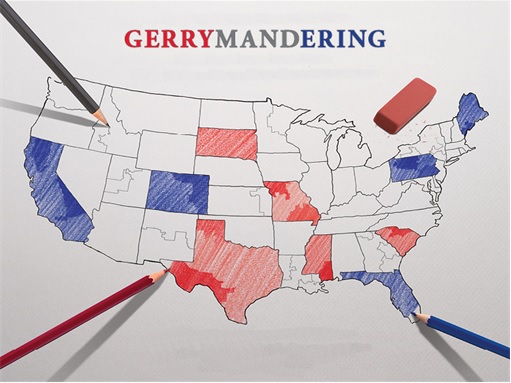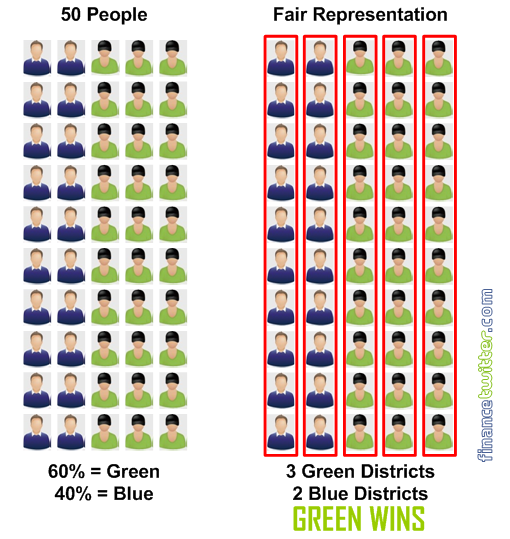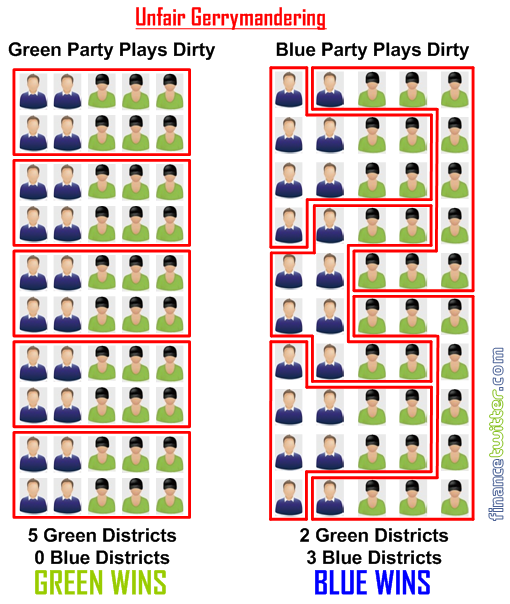If you’re not an investor oracle like Warren Buffett or an innovative guru like Steve Jobs, then you should venture into politics – if money, lots of them, is what you’re after. As much as politics is a bitch, it comes with nice perks. If not a billionaire, you can at least become a multimillionaire as a politician. And that’s a “guarantee”. Sure, politics is a dirty game not for the faint-hearted. Politics is a business about making money.
Due to the extremely attractive “side-incomes”, gerrymandering happens in every country that believes in election. From the United States to Malaysia, gerrymandering, or the art of drawing political boundaries to give a ruling party a numeric advantage over the opposition, happens secretly but deliberately. For example, the supposedly Election Commission of Malaysia has been working hand in glove with ruling party to ensure continuous victories.
But how does Election Commission or authorities in other countries entrusted with boundaries drawing play this dirty game? Many have heard about gerrymandering, unfair boundaries representatives and whatnot. Although it’s a complex process, the objective is pretty easy to understand. With the help of the chart below, suppose we have a state of 50 people (for ease of understanding, this number has been shrunk).
This state is known to have 20 supporters of Blue Party and 30 supporters of Green Party. Hence, as a democracy country, the Green Party is expected to rule until the next election because it has more supporters who would in turn yields 30 votes, which translates to 60% of the total votes. Until Blue Party can convince and convert some of these 30 supporters, Green Party will win (again) if the status quo remains.
Now, let’s assume this state is divided into 5 districts, where each district will send one representative to the House to represent the people. In an ideal and fair situation, which never happens in real life unfortunately, a proportionate representatives will consists of two from Blue Party and three from Green Party. Of course, it is assumed that all the people live in a nicely and fairly drawn five districts, divided equally.
While the Green Party rules the state, it wanted to control all the 5 districts because somehow oil was found in the two districts controlled by the opposition. With extraordinary new income from crude oil, the leaders of Green Party would be flushed with tax money to develop (or to corrupt itself) the districts. So, it bribes the relevant authorities to redraw the districts horizontally (diagram below), instead of the initial vertically.
Voila, instead of ruling the state with merely 3 representatives, Green Party controls the state with absolute power, taking over all the 5 representatives. Of course, in the real world, no democracy country would be so dumb to draw the boundaries in order to make a clean sweep. That would be too obvious, is it not? An example would be U.S. Democrats that won 38 out of 53 House seats (71.6%) in 2012, despite received only 62% of the popular votes.
What about the Blue Party? In another scenario, the Blue Party has been ruling for 50-years since independence. One fine day, it senses great trouble because its corrupt practices have been exposed repetitively, snowballs to scandals. New batch of young and educated supporters were seen to be supporting opposition Green Party. Blue Party could lose the state because even its own supporters have begun deserting to the opposition in droves .
Working hand in glove with the corrupted Election Commission, the Blue Party instructed the commission to redraw the boundaries. The commission did a splendid job, for when the election comes, the results was as expected – it lost the popular votes but amazingly still able to form the government. A classic example is none other than Malaysia under the Barisan Nasional (BN) ruling during 2013 general election.
Despite losing its popular votes to merely 47.38%, UMNO-led Barisan Nasional rules the federal government with 133 seats (60%) out of 222 parliamentary seats. Thanks to the Election Commission, such creative gerrymandering ensures BN stays in power although majority of the people despise them. In the chart above, the Blue Party cheats and wins. But as long as they win, who cares about being unfair, right?
Other Articles That May Interest You …
- 1MDB Scandal – Najib Bites Off More Than He Can Chew
- Remember WW2 History!! Prince Naruhito Rejects Japan’s Use Of Military
- Nik Aziz Passed Away – Time For Hadi Awang To Enter UMNO’s Bedroom
- Thank You For Sending Anwar To Jail
- Exposed!! – How HSBC Swiss Bank Helped Hide (Dirty) Money
- Mahathir vs Najib – Feng Shui vs Black Magic
- If Rafidah Was AP Queen, Shahrizat Is Condo Queen
- Marcos, Mubarak & Mahathir – Who’s The Richest Man?

|
|
March 2nd, 2015 by financetwitter
|


|

|

|

|

|

|

































Comments
Add your comment now.
Leave a Reply